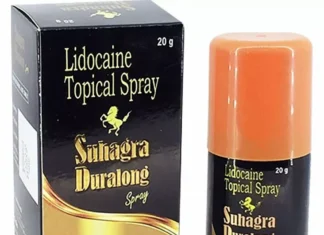Suboxone is a brand name for a medication suboxone doctors that contains buprenorphine and naloxone. It is used to treat opioid addiction by reducing withdrawal symptoms and cravings. The process of Suboxone induction and titration is a critical aspect of initiating and maintaining Suboxone treatment. In this article, we will explore the steps involved in Suboxone induction and titration, as well as considerations for ongoing maintenance treatment.
Suboxone Induction
Suboxone induction is the process of initiating treatment. Before beginning Suboxone treatment, a thorough assessment should be performed to determine the appropriate dose and duration of treatment. The assessment should include a comprehensive medical and substance use history, physical examination, laboratory tests, and a urine drug screen.
The first step in Suboxone induction is to ensure that the patient is in a state of moderate withdrawal. This is important because if the patient is not in withdrawal, the Suboxone may cause precipitated withdrawal, which can be very uncomfortable and potentially dangerous. The Clinical Opiate Withdrawal Scale (COWS) is commonly used to assess the severity of withdrawal symptoms and determine when it is safe to initiate Suboxone treatment.
Once the patient is in a state of moderate withdrawal, the initial dose of Suboxone can be administered. The starting dose is typically 2-4 mg of buprenorphine. After the initial dose is administered, the patient should be monitored for at least two hours to ensure that there are no adverse reactions.
If the patient is still experiencing withdrawal symptoms after two hours, an additional dose of 2-4 mg of Suboxone can be administered. The goal is to reach a stable dose that will suppress withdrawal symptoms and cravings without causing sedation or respiratory depression.
Titration
After the initial dose of Suboxone is administered, the dose should be titrated until the patient is stable. Titration involves gradually increasing the dose until the patient is no longer experiencing withdrawal symptoms or cravings. The optimal dose is the lowest effective dose that provides adequate symptom relief and prevents relapse.
The titration schedule can vary depending on the patient’s individual needs and response to treatment. The usual range of maintenance doses is between 4-24 mg of buprenorphine per day, but some patients may require higher doses. The dose should be increased slowly, usually every 2-3 days, until the patient is stable.
Considerations for Ongoing Maintenance Treatment
Once the patient is stable on Suboxone, ongoing maintenance treatment is necessary to prevent relapse and promote recovery. Ongoing treatment should be individualized based on the patient’s needs and goals. Some considerations for ongoing maintenance treatment include:
- Length of Treatment: The duration of Suboxone treatment can vary depending on the patient’s needs and goals. Some patients may require long-term treatment, while others may be able to taper off Suboxone after several months.
- Psychosocial Support: Suboxone treatment should be combined with psychosocial support, such as counseling and support groups. These services can help address the underlying causes of addiction and support ongoing recovery.
- Monitoring: Patients on Suboxone treatment should be monitored regularly to assess their progress and adjust their treatment plan as needed. This may include regular drug testing, medication adjustments, and monitoring for side effects.
- Co-occurring Disorders: Many patients with opioid addiction also have co-occurring mental health or medical disorders that require treatment. These disorders should be identified and treated as part of the overall treatment plan.
Conclusion
Suboxone induction and titration are critical steps in initiating and maintaining Suboxone treatment. The goal is to achieve a stable dose that effectively treats withdrawal symptoms and cravings without causing adverse reactions. Ongoing maintenance treatment is





